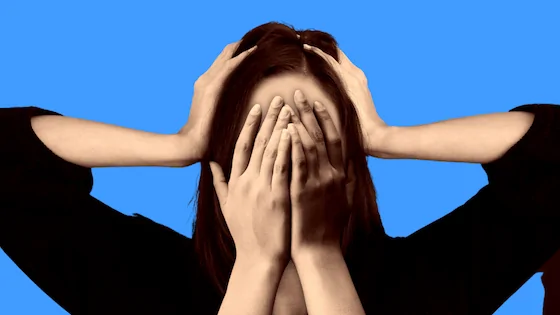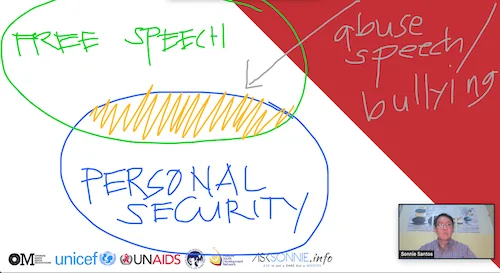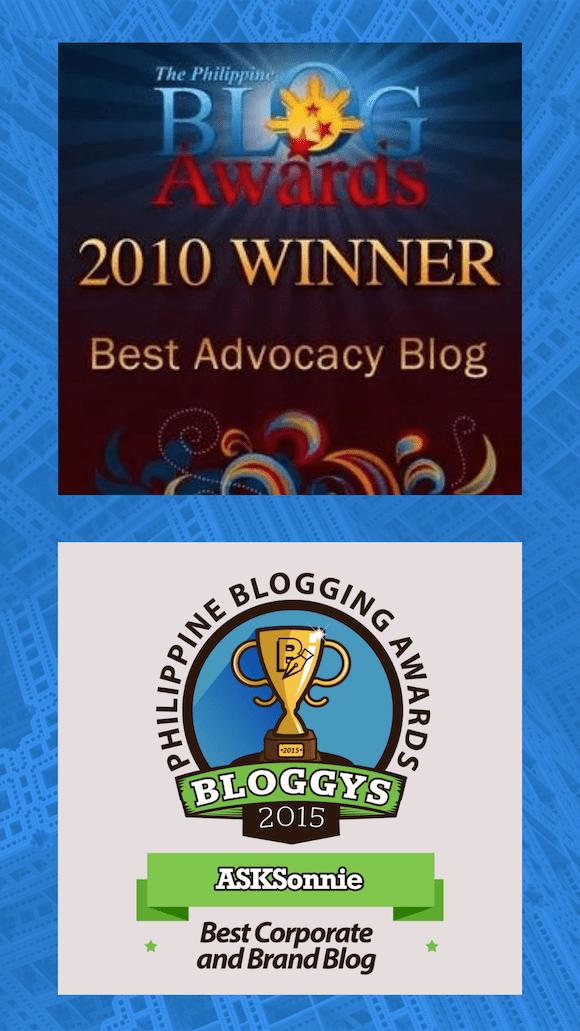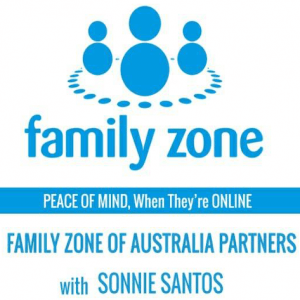If you or someone you know is experiencing digital harassment, visit our practical guide on Seven to Dos When Cyberbullied for immediate steps and local resources.
Cyberbullying in the Philippines: Strengthening Digital Empathy and Accountability (2025 Update)
Cyberbullying in the Philippines continues to evolve—from text harassment and social-media shaming in 2012 to today’s AI-driven impersonations, deepfakes, and online mobbing. Strengthening digital empathy and accountability is now essential for creating safe, respectful, and human-centered online spaces.

Cyberbullying Then and Now
Back in 2012, cyberbullying was already seen as a growing threat, with Facebook and SMS as the primary battlegrounds. Fast forward to 2025: harassment has taken new forms, including AI-generated deepfakes, impersonation, and coordinated online mobbing, making the issue more complex and damaging.
Cybercrime and Cyberbullying in the Philippines
In 2020, the top five cybercrimes reported in the Philippines were:
- Online scams
- Online libel
- Computer-related identity theft
- Anti-photo and video voyeurism
- Illegal access to online accounts
Updated Data (2023–2025): The Philippine National Police Anti-Cybercrime Group (PNP-ACG) and NBI Cybercrime Division continue to report significant increases in online harassment and defamation cases. As of late 2024:
- Online scams remained the top cybercrime nationwide, followed by online libel and identity theft.
- The Education Commission II (EDCOM 2) noted that around one in three Filipino students reported being bullied multiple times a month, many of them through digital platforms.
- Research among Filipino adolescents (ages 13–16) found that up to 80% had experienced cyberbullying in some form (PMC Study).
- Globally, the World Health Organization (2024) reported that 1 in 6 school-aged children in Europe experienced cyberbullying, while U.S. data (2025) show 36.6 % of boys and 28.6 % of girls reporting recent incidents (Cyberbullying Research Center).
These numbers confirm that cyberbullying has evolved into a public-health and human-rights concern—impacting students, employees, and communities alike. They also highlight the need for digital empathy, accountability, and stronger enforcement of cybercrime laws in the Philippines.
At least three of these crimes feed directly into cyberbullying:
- Online libel – defamation, harassment, shaming.
- Identity theft / impersonation – fake accounts used to humiliate or attack.
- Voyeurism / illegal access – weaponizing private content against victims.
What Is Cyberbullying?
The Philippines has no standalone “cyberbullying” law. But we can draw from Republic Act 10627 (Anti-Bullying Act of 2013), which defines bullying as:
“Any severe or repeated use … of a written, verbal or electronic expression … directed at another … that causes fear, emotional harm, creates a hostile environment, or disrupts school or organizational processes.”
Globally, UNICEF defines cyberbullying as bullying that uses digital technologies,
repeated behavior intended to scare, shame, or harm(UNICEF).
RA 10627 — Full Text (Anti-Bullying Act of 2013)
What it covers: bullying (including electronic acts) that causes fear, emotional harm, creates a hostile environment, or disrupts school processes; duties of schools to prevent, investigate, and act.
- Scope: K-12 schools and school-related activities
- Electronic acts: includes bullying via text, social media, and other digital channels
- Action: schools must adopt policies, reporting, and disciplinary procedures
When Cyberbullying Is Not
- Protected speech (opinions, criticism, satire, creative works) is generally not cyberbullying.
- However, if expression crosses into harm — harassment, defamation, humiliation, or threats — it becomes punishable.

screen grab of Sonnie’s talk about (cyber)bullying
Forms of Cyberbullying (Updated 2025)
- Cyber lynching / mobbing – group pile-ons or cancel culture.
- Canceling – deliberate exclusion or reputational destruction.
- Impersonation / identity theft – fake accounts or hacked profiles.
- Flaming – vulgar, abusive fights online.
- Text bullying / dark social – harassment via SMS or chat apps.
- Creative bullying – use of memes, altered images, or AI deepfakes.
- Outing – manipulating victims into revealing embarrassing information.
- Cyberbaiting – students provoking teachers, recording them for ridicule.
Recent studies show AI now fuels harassment: e.g. AI-generated deepfakes weaponized against classmates in Spain and Australia (The Guardian, NY Post).
Why It Matters: Suicide & Mental Health
Victims of cyberbullying are significantly more likely to experience depression, anxiety, and suicidal thoughts. The impact extends beyond the digital realm, affecting school performance, relationships, and long-term mental wellness.
WHO (2024): 1 in 6 school-aged children in Europe reported being cyberbullied (WHO Europe).
U.S. data (2025): 36.6 % of boys and 28.6 % of girls reported recent cyberbullying experiences (Cyberbullying Research Center).
Philippines (2023 study): Among Filipino adolescents aged 13–16, up to 80 % reported experiencing cyberbullying (PMC Study). Meanwhile, EDCOM 2 (2024) found that around one in three students are bullied multiple times a month, many through digital platforms.
Together, these data and real-life stories affirm that cyberbullying is not merely a disciplinary issue but a pressing public-health concern demanding empathy, policy action, and collective responsibility.
Philippine Laws Covering Cyberbullying (as of 2025)
- RA 10627 – Anti-Bullying Act (2013, Revised IRR 2025)
- RA 10175 – Cybercrime Prevention Act (2012)
- RA 9995 – Anti-Photo & Video Voyeurism Act (2009)
- RA 7610 – Child Protection Law (1992)
- RA 11313 – Safe Spaces Act (2019)
- HB 807 (Take It Down Act, 2025, pending) – fast-track removal of AI-generated abusive content (House Bill Text)
- HB 2312 (Deepfake Accountability Bill, 2025, pending) – criminalizes malicious deepfakes (House Bill Text)
Closing Thought
Cyberbullying has transformed — from text harassment in 2012 to AI-generated deepfakes in 2025. The forms evolve, but the mission remains: create safe digital spaces where rights to dignity and free expression are respected.
The recent case of Emman Atienza reminds us that cyberbullying is not just about technology—it is about people. By applying the ASK Framework—Align our values, Strengthen empathy and accountability, and Kickstart positive digital action—we can help build safer online communities where compassion, courage, and responsibility prevail.
Applying the ASK Framework to Cyberbullying Prevention
The ASK Framework—Align, Strengthen, Kickstart—guides individuals, schools, and organizations toward digital responsibility and resilience. When applied to cyberbullying prevention, it transforms awareness into concrete action.
Align: Purpose and Principles
Promote a culture where online conduct aligns with shared values—respect, empathy, and truth. By aligning purpose with responsible digital citizenship, we reduce tolerance for harmful behaviors and model integrity online.
Strengthen: Capacity and Character
Build digital hygiene and emotional maturity through education and training. Strengthen capacity by teaching students, employees, and families to identify risks, manage privacy settings, and respond constructively to online conflicts.
Kickstart: Action and Accountability
Transform values into behavior. Encourage reporting, bystander intervention, and support systems that protect victims. Kickstart accountability by enforcing community standards and recognizing positive digital role models.
Frequently Asked Questions
Is cyberbullying a crime in the Philippines?
While there is no single “Cyberbullying Law,” several statutes apply. Republic Act 10627 (Anti-Bullying Act of 2013) covers electronic acts in schools; RA 10175 (Cybercrime Prevention Act) penalizes online libel, identity theft, and harassment; RA 11313 (Safe Spaces Act) covers gender-based online harassment; and RA 9995 (Anti-Photo and Video Voyeurism Act) protects victims of non-consensual sharing.
Is a case of cyberbullying applicable for adults or just school-age individuals?
Cyberbullying is often discussed in the context of students, but adults can also be victims or perpetrators. When harassment occurs in workplaces, communities, or online platforms, related provisions of the Cybercrime Prevention Act, Safe Spaces Act, or Civil Code on damages may apply.
What Philippine laws protect victims of cyberbullying?
Key laws include RA 10627 (Anti-Bullying Act), RA 10175 (Cybercrime Prevention Act), RA 9995 (Anti-Photo and Video Voyeurism Act), RA 7610 (Child Protection Law), and RA 11313 (Safe Spaces Act). Pending bills such as HB 807 (Take It Down Act) and HB 2312 (Deepfake Accountability Bill) further strengthen digital protection.
How does the ASK Framework help prevent cyberbullying?
It bridges awareness and action. Align sets ethical direction, Strengthen builds capability and empathy, and Kickstart enforces responsible participation. Together, these pillars nurture communities that value respect, empathy, and accountability both online and offline.
💡 The ASK Takeaway
Cyber Wellness and empathy advocacy aligns perfectly with our ASK Framework — Align • Strengthen • Kickstart:
- Align your values with digital citizenship and empathy.
- Strengthen capacity through awareness, safety, and accountability.
- Kickstart culture shifts that promote respect, courage, and compassion online.
Discover the full framework →
ASK Framework Cornerstone Page





